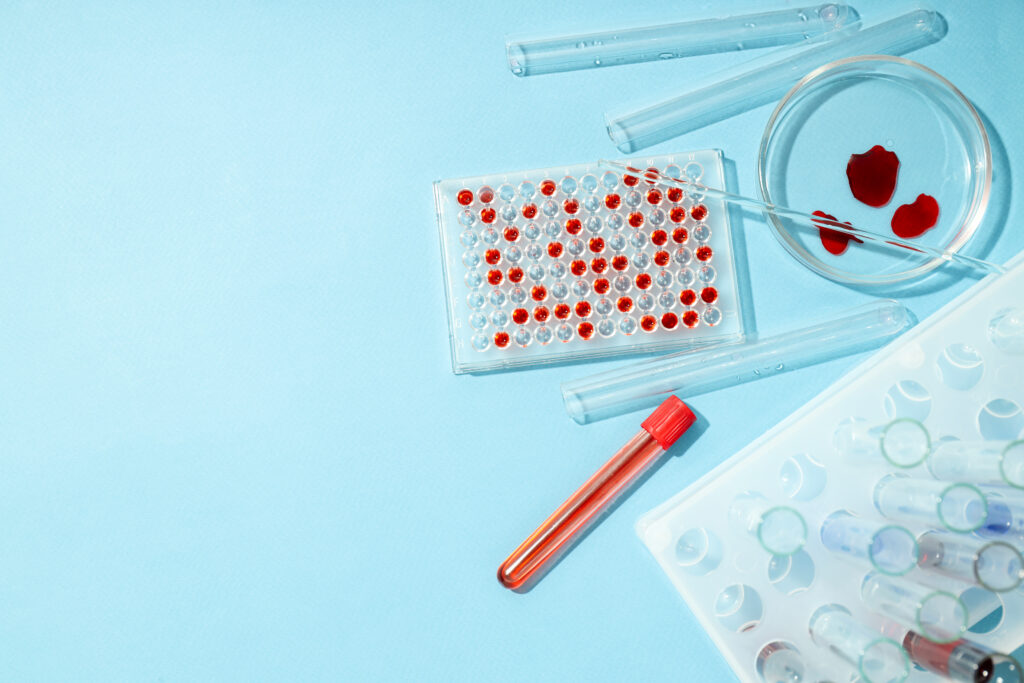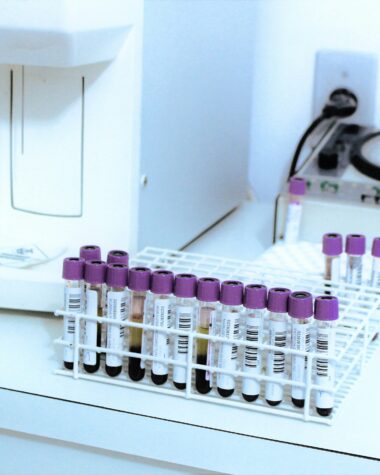Teva Pharmaceutical Industries Ltd. (NYSE:TEVA) is one of the world’s largest and most established pharmaceutical companies, headquartered in Tel Aviv, Israel, with a history that spans more than a century. Founded in 1901, Teva began as a small wholesale drug business and evolved into a global pharmaceutical powerhouse recognized for its leadership in generic medicines and, more recently, its growing portfolio of innovative and specialty drugs. Today, Teva supplies medications to more than 200 million people every day in over 60 countries, making it a critical player in global healthcare and one of the largest producers of both generic and branded pharmaceuticals worldwide.
Teva’s core strength lies in its vast generics division, which has historically been the backbone of its business. The company’s extensive portfolio includes more than 3,500 products across nearly every therapeutic area, allowing it to provide affordable, high-quality medications to millions of patients and healthcare systems around the world. Over the decades, Teva’s scale and manufacturing capabilities have enabled it to compete effectively on cost while maintaining a strong reputation for reliability and regulatory compliance. However, the same segment that fueled Teva’s rise has also faced growing challenges in recent years, including intensified global competition, pricing pressure, and regulatory changes that have reshaped the generics landscape. These headwinds have forced the company to rethink its business model and accelerate a strategic transformation toward higher-margin branded and innovative products.
To diversify beyond its generics legacy, Teva has invested heavily in research and development, focusing on specialty and innovative therapies for central nervous system (CNS) disorders, respiratory diseases, oncology, and movement disorders. The company’s branded portfolio includes several globally recognized names such as AUSTEDO (deutetrabenazine) for Huntington’s disease and tardive dyskinesia, AJOVY (fremanezumab) for migraine prevention, and COPAXONE, its long-standing multiple sclerosis treatment that once generated billions in annual revenue. In partnership with Medincell, Teva also developed UZEDY, a long-acting subcutaneous risperidone injection for schizophrenia, which received FDA approval in 2023 and further expanded its indication in 2025 for the maintenance treatment of bipolar I disorder. This new therapy marks a major milestone in Teva’s branded drug evolution, showcasing the company’s commitment to long-acting injectable technologies and patient adherence solutions in psychiatric care.
Teva’s innovation strategy is guided by its “Pivot to Growth” initiative, which focuses on building a sustainable mix between generics, complex biosimilars, and branded pharmaceuticals. Under the leadership of CEO Richard Francis, the company has prioritized pipeline expansion, cost optimization, and debt reduction to strengthen its financial foundation. After several years of restructuring, Teva has made measurable progress in stabilizing revenue and generating consistent free cash flow. Its management projects moderate top-line growth of around 2–3% annually through 2028, with branded products like AUSTEDO, AJOVY, and UZEDY expected to drive the majority of margin improvement. These efforts are complemented by Teva’s global R&D infrastructure, which employs thousands of scientists and clinicians working on next-generation drug formulations, biosimilars, and digital health solutions.
Despite its successes, Teva’s journey has not been without challenges. The company has faced heavy financial strain from a $17 billion debt load accumulated through acquisitions, notably the 2016 purchase of Actavis Generics. In addition, Teva has weathered years of legal scrutiny, including settlements related to opioid litigation in the United States and antitrust fines in the European Union. Nonetheless, the company has taken significant steps to rebuild credibility, streamline operations, and focus on long-term value creation. Recent credit upgrades from Fitch and Moody’s reflect growing confidence in Teva’s financial turnaround and operational discipline.
Today, Teva Pharmaceutical Industries stands as a global healthcare leader at a critical turning point. With a strong presence in both generics and specialty medicine, the company is redefining itself as a diversified, innovation-driven pharmaceutical manufacturer capable of addressing the world’s most pressing healthcare needs. By leveraging its unmatched scale, advanced R&D capabilities, and commitment to patient access, Teva continues to shape the future of affordable and innovative medicine while striving to deliver on its mission: to improve health and make quality healthcare accessible to everyone, everywhere.
Debt, Dependence, and the Fragile “Pivot to Growth”
Despite management’s rhetoric about innovation and diversification, Teva remains shackled by its balance sheet. As of 2025, the company holds roughly $17.2 billion in total debt, against shareholder equity of about $6.8 billion, translating to a debt-to-equity ratio exceeding 250%. That level of leverage would be risky for any manufacturer—let alone one with highly commoditized core products and volatile pricing. Even with recent credit upgrades from Fitch and Moody’s, Teva’s interest coverage ratio hovers near 3.9x, signaling limited flexibility should earnings falter. The burden of servicing its debt continues to restrict the company’s ability to reinvest aggressively in R&D or shareholder returns, leaving it perpetually playing defense.
Teva’s 2025 strategic plan—the so-called “Pivot to Growth”—relies heavily on expanding its branded drug portfolio while streamlining its global generics footprint. Management aims to achieve a 30% operating profit margin by 2027 and sustain annualized revenue growth near 2.3%, which would bring total revenue to about $17.8 billion and earnings of roughly $1.5 billion by 2028. However, those projections hinge on optimistic assumptions that branded sales will not only compensate for continued erosion in generics but also outperform cost pressures tied to inflation and regulatory price reforms.
The most immediate threat comes from the Inflation Reduction Act (IRA), which allows U.S. Medicare to negotiate prices for certain high-cost drugs. Teva’s key branded therapies—particularly AUSTEDO, its flagship treatment for movement disorders—could face downward price revisions once eligible, eroding margins just as branded momentum begins to build. The company’s limited pricing power and historical reliance on volume-based sales could amplify the financial strain, making its 2028 profitability targets far less attainable than they appear.

CHECK THIS OUT: Corcept (CORT) Skyrockets 1,534% in 10 Years and Immuneering (IMRX) Reports 86% 9-Month Survival in Pancreatic Cancer.
Generics Still a Problem Teva Can’t Escape
While UZEDY’s FDA expansion gives Teva a temporary boost in sentiment, the company’s generics business remains its Achilles’ heel. Once the crown jewel of Teva’s empire, the generics segment now suffers from chronic price compression, supply chain volatility, and fierce competition from low-cost global rivals. In its most recent quarter, Teva reported a 2% decline in generics revenue globally (excluding Japan) and a 6% drop in U.S. generics sales, reflecting ongoing structural erosion.
This is not a short-term slump—it’s a long-term deterioration of Teva’s foundational business model. Generic drugs, by nature, are prone to commoditization. When patents expire, multiple manufacturers rush to market, driving prices downward and margins thinner with each successive entrant. Teva’s attempts to pivot toward “complex generics” and biosimilars may help slow the decline, but they cannot fully reverse it. The company’s legacy dependence on generics revenue continues to weigh heavily on both earnings visibility and investor confidence.
Moreover, macroeconomic pressures such as raw material inflation and global currency fluctuations add another layer of risk. Teva’s operational footprint across more than 60 countries exposes it to exchange rate volatility, while rising input and logistics costs—exacerbated by geopolitical instability in regions like Israel and Eastern Europe—further strain margins.
Legal Landmines and Reputation Risk
Compounding its operational woes are Teva’s ongoing legal and regulatory overhangs. Over the past decade, the company has faced a series of lawsuits and settlements that collectively cost billions. Teva admitted to price-fixing in the U.S. generic drug market, resulting in a $225 million criminal penalty, and it continues to face litigation related to opioid marketing practices. In Europe, the company was fined €462.6 million for abusing market dominance to delay generic competition for its blockbuster multiple sclerosis drug, Copaxone.
While management has attempted to resolve many of these legacy issues, they continue to tarnish Teva’s reputation and weigh on investor sentiment. Regulatory scrutiny also remains high. In 2025, the U.S. Federal Trade Commission opened an investigation into Teva’s patent listings on respiratory medications, questioning whether the company engaged in anti-competitive practices to block rivals. The potential for future penalties or forced divestitures remains a constant overhang on Teva’s stock performance.
The UZEDY Catalyst: A Small Spark, Not a Structural Shift
It’s easy to see why investors are excited about UZEDY’s new indication. Approved initially for schizophrenia in 2023, and now cleared by the FDA for maintenance treatment of bipolar I disorder, the therapy represents a tangible win for Teva’s branded drug pipeline. The approval also follows a September 2025 regulatory clearance in South Korea, reflecting global momentum for the product. Using SteadyTeq® technology, UZEDY allows for subcutaneous, extended-release risperidone injections that maintain therapeutic drug levels for a full month—an innovation that could enhance adherence and reduce relapse rates among bipolar patients.
Still, from a financial perspective, UZEDY’s near-term impact on Teva’s $17 billion annual revenue base is expected to be incremental rather than transformative. The bipolar I market is competitive, with entrenched rivals like Johnson & Johnson’s Invega and Otsuka’s Abilify Maintena already commanding strong physician loyalty. While Teva’s formulation offers convenience advantages, capturing market share will require significant marketing expenditure, eroding early profitability. Furthermore, the product’s eventual exposure to U.S. price negotiations could limit its long-term earnings potential just as adoption begins to scale.
Valuation and Investor Expectations: A Precarious Balance
As of October 2025, Simply Wall St estimates Teva’s fair value at $24.22 per share, implying roughly 20% upside from its current market price. However, community valuations range widely—from $24 to as high as $58 per share—revealing deep uncertainty about the company’s trajectory. Bulls argue that a successful branded pivot will justify multiple expansion, while bears warn that the company’s operational, regulatory, and macroeconomic risks could compress valuations further.
Given Teva’s historical volatility and high leverage, the market is right to be cautious. The company’s cash generation remains vulnerable to both external shocks and internal execution missteps. If branded sales underperform expectations or debt reduction stalls, Teva could once again find itself under financial strain—forcing renewed cost cuts or divestitures that stunt long-term growth.
The Verdict: A Fragile Recovery Masked by Headlines
While Teva Pharmaceutical Industries continues to make progress in repositioning itself as a diversified pharmaceutical company, its structural challenges are far from resolved. The UZEDY FDA approval represents a commendable milestone, but it does not fundamentally alter the company’s risk profile. High leverage, declining generics margins, and exposure to regulatory pricing reforms continue to cast long shadows over its growth ambitions.
In the near term, investors may see short-lived rallies fueled by optimism around UZEDY or other pipeline updates. However, without consistent margin expansion, accelerated debt reduction, and tangible improvements in free cash flow, Teva’s turnaround story risks stalling once again. The market’s faith in a “new Teva” remains fragile—and unless the company can deliver sustainable earnings growth beyond headlines, the bearish thesis still holds more weight than the bullish narrative.
READ ALSO: Tiziana (TLSA) Surges 143% in 2025 and Immuneering (IMRX) Reports 86% 9-Month Survival in Pancreatic Cancer.








